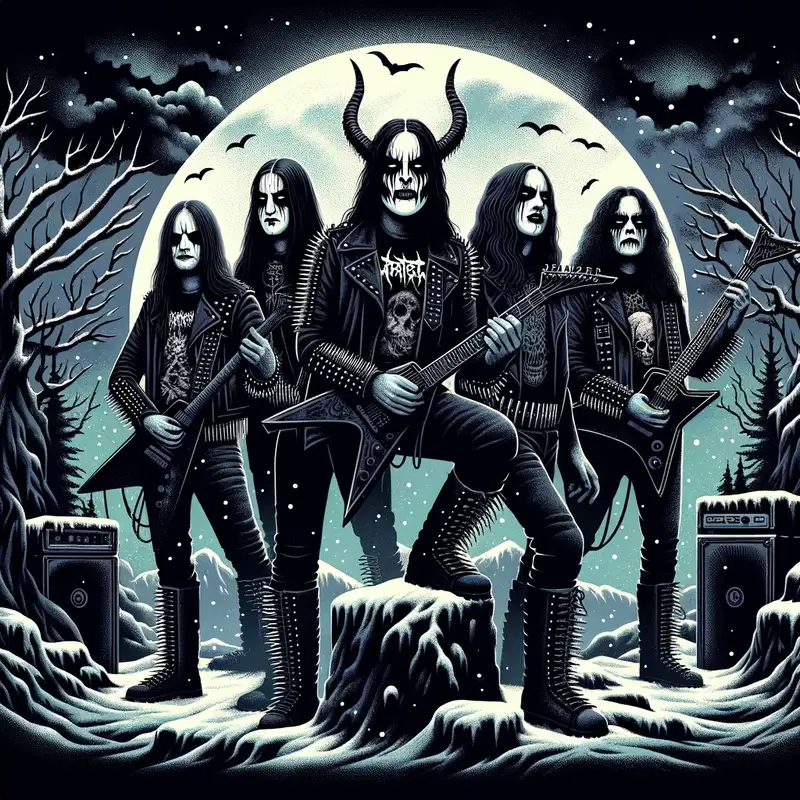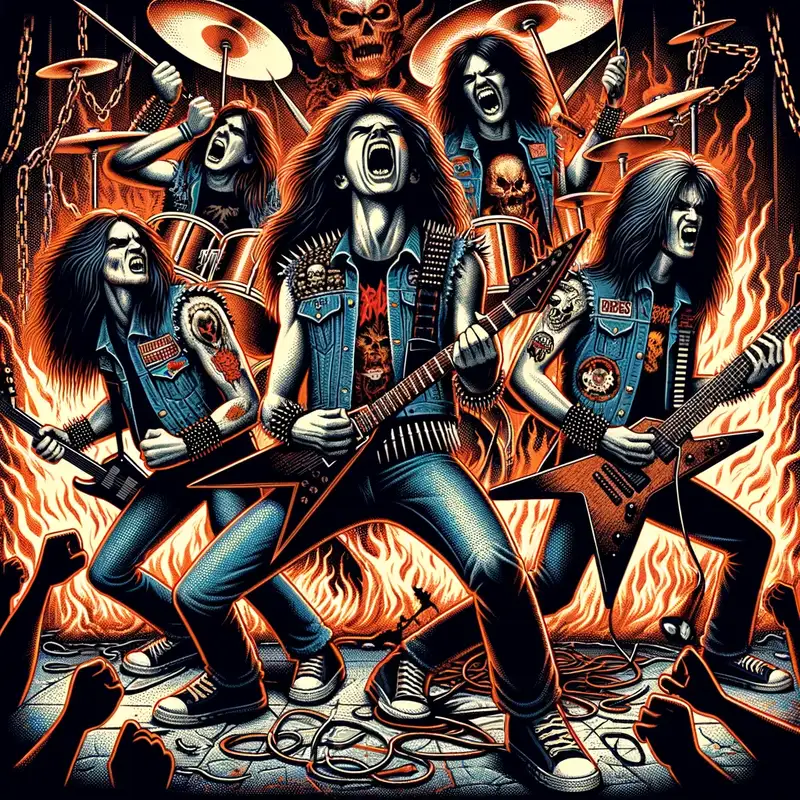Black Metal

Black Metal, as a distinct subgenre of heavy metal, traces its roots back to the early 1980s. Although several bands from this era incorporated elements that would later be associated with black metal, it was in the early 1990s that the genre truly began to define itself. It was an evolution from the speed and thrash metal of the 80s, blending dark atmospheres, fast tempos, and raw production.
Table of Contents
Key Characteristics of Black Metal
- Sound and Production: Traditionally, black metal features high-pitched shrieking vocals, blast beat drumming, and tremolo-picked guitar riffs. The production is often intentionally raw, giving it an underground or ‘necro’ feel.
- Lyrics and Themes: The lyrical themes of black metal often revolve around Satanism, paganism, nature, darkness, and anti-Christian sentiments. However, as the genre has evolved, so too have its thematic elements.
- Visual Aesthetics: Corpse paint (white and black face paint), spikes, leather, and inverted crosses are part and parcel of the black metal look, especially for stage performances.
The First Wave: Pioneers and Forerunners
The first wave of black metal includes bands from the early to mid-80s that played a significant role in shaping the sound and ethos of the genre. Bands like Bathory, Venom, and Hellhammer are often cited as primary influences.
The Second Wave: Norway’s Rise
The early 1990s saw the rise of the second wave of black metal, with Norway being its epicenter. This wave was characterized by a more defined sound and increased extreme imagery and acts. Notable bands include:
- Mayhem: Known for their controversial history and influential album “De Mysteriis Dom Sathanas”.
- Burzum: A one-man project by Varg Vikernes, notable for its atmospheric and raw sound.
- Darkthrone: Started as a death metal band but switched to black metal with their album “A Blaze in the Northern Sky”.
- Emperor: Combined symphonic elements with black metal, creating a grandiose sound.
Subgenres
Over time, black metal has evolved and has birthed various subgenres:
- Symphonic Black Metal: Incorporates symphonic and orchestral elements. Notable bands include Dimmu Borgir and Cradle of Filth.
- Atmospheric Black Metal: Prioritizes atmosphere over aggression. Bands like Wolves in the Throne Room and Agalloch are key players here.
- Depressive Black Metal (DSBM): Focuses on themes of despair, depression, and suicide. Examples include Xasthur and Shining.
Controversies
Black metal has its fair share of controversies, most notably the church burnings in Norway and several murders associated with the scene in the early 90s. Additionally, there’s been consistent debate about commercialism, ‘true’ black metal, and the genre’s association with extreme ideologies.
Modern Black Metal
While the 1990s might be considered the golden era of black metal, the genre has not remained stagnant. Modern black metal bands have incorporated a wide variety of influences from post-rock to folk. Bands like Deafheaven, Alcest, and Panopticon have further expanded the boundaries of what black metal can be.


